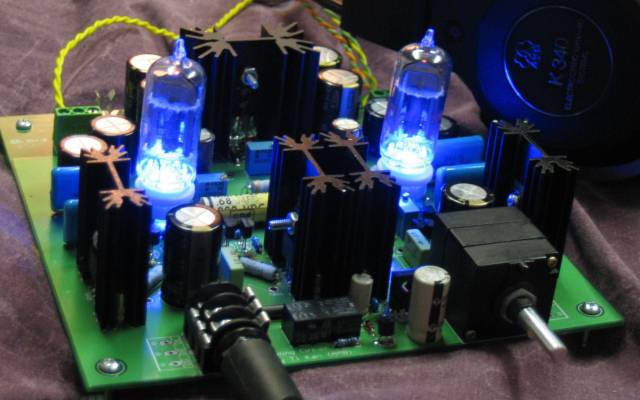Quote:
Originally Posted by amphead /img/forum/go_quote.gif
My guess, is that biasing the DBs at a lower voltage produces more boom with less clarity, maybe more harmonic distortion. The available voltage swing would be less, as TzeYang says about the headroom. This results in clipping of the signal if driven harder, with the extra current pumping the headphones drivers. Usually not what you would want. Thus biasing the DBs higher, resulting in less current flow, but without harmonic distortion induced by clipping of the signal? Thoughts? 
|
I'm nor sure I view things so similarly.. a transistor is kind of like a 'variable switch', or a dimmer.. it is a junction between 2 circuits, one usually lower current/voltage, and one higher. lets stick to current.. its pretty much the same with voltage though. anyway, by changing the current in the low current circuit, you're controlling the current flow in the high current circit in an almost analogous way. Now, the 'high current' circuit has its own limitations, and so does the transistor.. resulting in a 'saturation current', being the maximum current that can flow through it. so lets say it simply 'doubles' the current, ie, by allowing a small current in circuit a, it allows double the current to flow in circuit B. so(all numbers as examples alone), 0.5amp-> 1amp, 1amp->2amp... but lets say the saturation current is 3amps, so 1.2->2.4, 1.5->3, 1.6->3, 2->3 you get what I mean(clipping).. the thing is, its not a linear device, so it cant just double. invision a parabolic climb that straightens out somewhere for a bit then suddently becomes flat. kind of like:
0->0
0.1>0.05
0.2>0.2
0.3>0.4
0.4>0.7
0.5>1 (here its double, lets say it has becomes linear here...)
0.6>1.2 ....1>2.. 1.5>3 (now, saturation) 1.6>3 ... which is, basically, clipping.
so, the way I see it is that you can get larger current swings if you oscillate between (0..1.5)->(0..3) but it wont be linear, so a sin wave would look kind of funny. but if your oscillations would be between say (0.9...1.1)->(1.8->2.2) you would have an almost identical sin wave of double the current flow.. thing is, there is always current flowing (dc), but thats another paragraph, and what capacitors are for
but basically, unbiased.. the current swing can be higher, the headroom that I think he meant was the margin of linearity.. like, if its linear between (input of) 0.5 and 1.5, you can oscillate around 1amp(bias current) with a headroom of half an amp before you either start clipping or dropping out of class A linearity.....
anyway, I havent actually studied this stuff yet, so I'm likely to think differently in a year from now(ask me then
) and I may be wrong/innacurate/whatevere.. or just making a mess with numbers.. I think google will get you further than I did


































